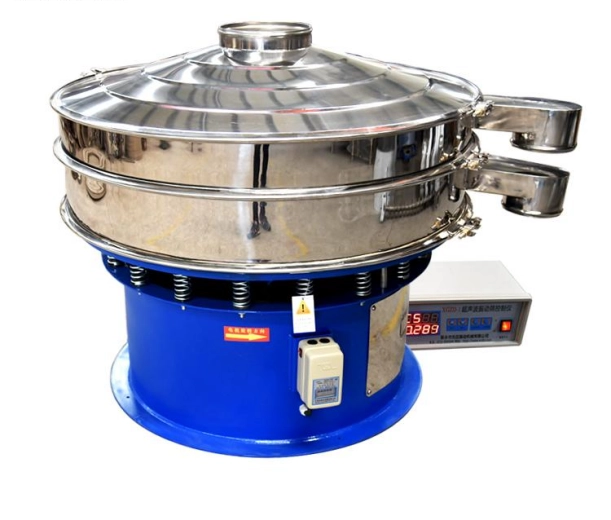Content Menu
● Understanding Vibrating Sieves
>> What is a Vibrating Sieve?
>> Importance of Sieve Motion
● Linear Motion Sieves
>> Design and Functionality
>>> Key Features of Linear Motion Sieves
>> Applications of Linear Motion Sieves
● Circular Motion Sieves
>> Design and Functionality
>>> Key Features of Circular Motion Sieves
>> Applications of Circular Motion Sieves
● Comparing Linear and Circular Motion Sieves
>> Motion and Material Handling
>> Efficiency and Throughput
>> Design and Construction
>> Maintenance and Operation
● Choosing the Right Sieve for Your Application
>> Material Characteristics
>> Production Requirements
>> Space and Installation
● Conclusion
● Frequently Asked Questions
>> 1. What is the main difference between linear and circular vibrating sieves?
>> 2. Which type of sieve is better for fine powders?
>> 3. Can circular sieves handle wet materials?
>> 4. How do I determine the right sieve for my application?
>> 5. Are linear sieves easier to maintain than circular sieves?
Vibrating sieves are essential tools in various industries for separating materials based on size. They are widely used in food processing, pharmaceuticals, chemicals, and mining. The two primary types of vibrating sieves are linear and circular motion sieves. Each type has its unique characteristics, advantages, and applications. This article will explore the differences between linear and circular vibrating sieves, helping you understand which type is best suited for your specific needs.

Understanding Vibrating Sieves
What is a Vibrating Sieve?
A vibrating sieve is a mechanical device that uses vibration to separate materials based on size. It consists of a screen or mesh that allows smaller particles to pass through while retaining larger ones. The vibration can be generated by various means, including electric motors or pneumatic systems, and can be adjusted to suit different materials and applications.
Importance of Sieve Motion
The motion of the sieve plays a crucial role in its efficiency and effectiveness. The two main types of motion are linear and circular, each influencing how materials are processed.
Linear Motion Sieves
Design and Functionality
Linear vibrating sieves operate on a straight-line motion. The materials are fed onto the screen and move forward in a linear path. This design is particularly effective for separating fine particles and is commonly used in applications where precise classification is required.
Key Features of Linear Motion Sieves
- Straight-Line Motion: The materials move in a straight line, which helps in achieving a uniform flow across the screen.
- Multiple Decks: Linear sieves can have multiple decks, allowing for the separation of different particle sizes simultaneously.
- High Efficiency: They are designed for high throughput, making them suitable for large-scale operations.
Applications of Linear Motion Sieves
Linear vibrating sieves are widely used in industries such as:
- Food Processing: For separating flour, sugar, and other fine powders.
- Pharmaceuticals: To classify and separate active ingredients and excipients.
- Chemical Industry: For screening chemicals and powders.
Circular Motion Sieves
Design and Functionality
Circular vibrating sieves utilize a circular motion to separate materials. The screen is inclined, and the circular motion helps in moving the materials across the surface, allowing for effective separation.
Key Features of Circular Motion Sieves
- Circular Motion: The materials move in a circular path, which can help in reducing blinding and improving the screening efficiency.
- Robust Design: Typically built with thicker materials, circular sieves are designed to withstand heavy loads and high-speed vibrations.
- Versatility: Suitable for both fine and coarse materials, making them adaptable to various applications.
Applications of Circular Motion Sieves
Circular vibrating sieves are commonly used in:
- Mining: For screening ores and minerals.
- Construction: To separate aggregates and sand.
- Food and Beverage: For grading and separating larger particles from powders.
Comparing Linear and Circular Motion Sieves
Motion and Material Handling
The primary difference between linear and circular vibrating sieves lies in their motion:
- Linear Motion: Materials move in a straight line, which is ideal for precise separation of fine particles.
- Circular Motion: Materials move in a circular path, which is better for handling larger particles and reducing the risk of blinding.
Efficiency and Throughput
- Linear Sieves: Generally offer higher throughput for fine materials due to their straight-line motion and multiple deck options.
- Circular Sieves: While they can handle larger volumes, their efficiency may decrease with very fine powders due to potential blinding.
Design and Construction
- Linear Sieves: Often constructed with lighter materials, making them easier to install and maintain.
- Circular Sieves: Built with more robust materials to handle heavy loads, which can lead to increased durability but also higher costs.
Maintenance and Operation
- Linear Motion Sieves: Typically require less maintenance due to their simpler design and fewer moving parts.
- Circular Motion Sieves: May require more frequent maintenance due to the complexity of their motion and the materials used.
Choosing the Right Sieve for Your Application
When selecting between linear and circular vibrating sieves, consider the following factors:
Material Characteristics
- Particle Size: If you are working with fine powders, a linear sieve may be more effective. For larger particles, a circular sieve is often better.
- Moisture Content: Circular sieves are generally more effective for materials with higher moisture content.
Production Requirements
- Throughput Needs: Assess the volume of material you need to process. Linear sieves are better for high throughput of fine materials, while circular sieves can handle larger volumes of coarser materials.
Space and Installation
- Available Space: Linear sieves often have a smaller footprint, making them suitable for facilities with limited space.
- Installation Requirements: Consider the ease of installation and maintenance when choosing a sieve type.
Conclusion
Both linear and circular vibrating sieves have their unique advantages and applications. Understanding the differences between these two types of sieves is crucial for selecting the right equipment for your specific needs. Linear sieves excel in fine particle separation and high throughput, while circular sieves are versatile and robust, suitable for a variety of materials. By considering the characteristics of your materials and your production requirements, you can make an informed decision that enhances your operational efficiency.

Frequently Asked Questions
1. What is the main difference between linear and circular vibrating sieves?
The main difference lies in their motion: linear sieves move materials in a straight line, while circular sieves use a circular motion.
2. Which type of sieve is better for fine powders?
Linear vibrating sieves are generally better for fine powders due to their straight-line motion and higher throughput.
3. Can circular sieves handle wet materials?
Yes, circular vibrating sieves are often more effective for materials with higher moisture content.
4. How do I determine the right sieve for my application?
Consider factors such as particle size, moisture content, throughput needs, and available space when selecting a sieve.
5. Are linear sieves easier to maintain than circular sieves?
Yes, linear sieves typically require less maintenance due to their simpler design and fewer moving parts.
Hot Tags: China, Global, OEM, private label, manufacturers, factory, suppliers, manufacturing company










































 .
. 